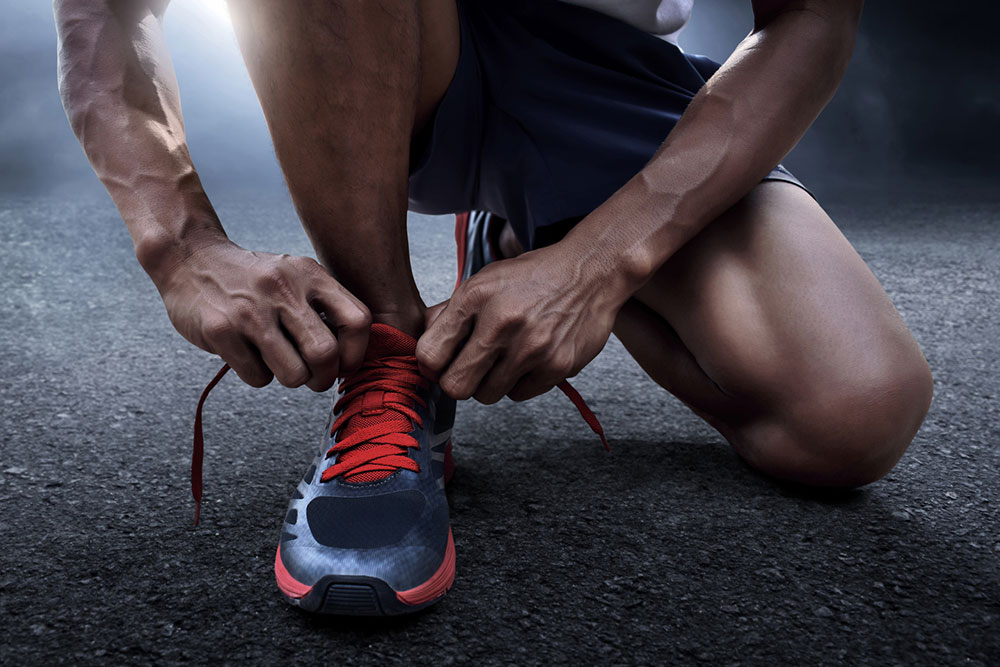10 tips for selecting the perfect running shoes

Many people looking to improve their physical fitness take to running or jogging. However, these exercises require investing in proper footwear. The right pair of shoes can enhance performance, provide comfort, and reduce the risk of injury. When buying running shoes, individuals must consider several critical factors, such as their foot type and pronation, the footwear’s cushioning, and the running surface. Here are a few tips for choosing the right running shoes.
Understand foot type
The first crucial step in the journey toward finding the perfect pair of running shoes is understanding one’s foot type. Everyone has unique foot arch characteristics that influence the selection process. People with flat feet should choose shoes that provide stability or motion control. Those with neutral arches have the flexibility to choose footwear that delicately balances stability and cushioning.
Evaluate the cushioning
Cushioning is a critical factor that directly influences the overall running experience. Shoes can be divided into three types depending on their cushioning:
- Minimalist shoes have minimal cushioning. They offer a more natural and responsive feel and a better connection with the terrain. These shoes are ideal for seasoned runners with a neutral gait.
- Neutral cushioning shoes are tailored for those with a normal pronation pattern. They strike a delicate balance between support and cushioning, catering to a broad spectrum of runners.
- Maximalist shoes boast substantial cushioning. They deliver a plush and comfortable ride for extended periods. Long-distance runners or those prone to impact-related injuries can consider this type.
Consider the running surface
The surface on which individuals run significantly influences their choice of running shoes. Those who run on paved surfaces should consider shoes with durable outsoles and responsive cushioning to absorb the constant impact. Trail running enthusiasts should prioritize footwear with rugged outsoles, enhanced traction, and additional protection.
Ensure the perfect fit
Buying shoes that fit perfectly is critical for comfort and injury prevention. One should ensure ample space in the toe box to prevent cramped toes, allow for natural toe movement, and minimize the risk of discomfort and injury while running. The weight of the shoes is another critical factor. Lighter options are best for speed, while heavier ones are best for additional stability and support during long-distance running. When trying on running shoes, individuals should wear running socks. This practice ensures a more accurate assessment of fit and comfort, two parameters that significantly influence the overall running experience.
Assess shoe material and breathability
The materials used to manufacture running shoes significantly contribute to their durability, support, and breathability. One should select a pair whose upper material aligns with one’s preferences. Individuals can choose shoes with a breathable mesh or a more structured material. Shoes with a breathable mesh provide improved ventilation, ensuring the feet stay cool and dry. They prevent overheating and discomfort during prolonged runs. However, a more structured material offers enhanced support.
Prioritize toe protection
Besides ensuring the perfect fit, individuals should choose shoes that protect the toes adequately, especially if they are trail runners. One can go for shoes with reinforced toe caps, commonly made from durable materials like rubber or synthetic overlays. Toe caps protect against rocks, roots, and debris along rugged trails. A robust toe protection design not only prevents potential injuries but also enhances the shoe’s overall durability, ensuring it stands up to the challenges of diverse surfaces.
Choose the right amount of flexibility
A shoe’s flexibility affects the movement of the foot. Optimal flexibility allows the foot to flex and bend naturally during the running gait cycle, promoting a more efficient and comfortable stride. Shoes that balance flexibility and support prevent unnecessary strain on the foot and lower leg. When assessing flexibility, individuals should consider shoes that bend at the ball of the foot. Such shoes facilitate a smoother transition from heel to toe during each step.
Check arch support
Evaluating arch support is critical when buying running shoes. Arch support contributes to the overall stability and comfort of the shoe. Shoes with proper arch support help distribute pressure evenly across the foot, reducing the risk of discomfort and fatigue during longer runs. Individuals with flat feet may benefit from shoes with built-in arch support to provide the necessary lift. On the other hand, those with high arches may prefer shoes that offer additional cushioning in the arch area for enhanced comfort and shock absorption.
Evaluate durability
When assessing the overall durability of running shoes, one must consider the materials used in both the outsole and upper construction. The outsole, typically made of rubber, should exhibit resistance to abrasion, ensuring it can withstand the wear and tear associated with various terrains. When inspecting the upper materials for durability, one must focus on the high-stress areas, such as the toe box and heel counter. Reinforcements in these areas, such as overlays or stitching, enhance the shoes’ longevity, making them more resilient to the demands of consistent running.
Set a budget
While investing in quality footwear is crucial, individuals should set a reasonable budget for running shoes. Establishing a budget ensures one gets the features they want without causing financial stress. Runners should consider factors like cushioning, durability, and style but avoid getting shoes that are out of their budget range.